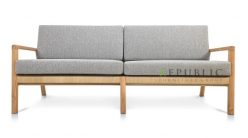linkinghub.elsevier.com
Nicola Sainoa, f1, Paolo Galeottib, f2, Roberto Sacchib, f2, Giuseppe Boncoraglioa, Roberta Martinellia and Anders Pape Møllerc, f3
a Dipartimento di Biologia, Università degli Studi di Milano
b Dipartimento di Biologia Animale, Università degli Studi di Pavia
c Laboratoire de Parasitologie Evolutive, CNRS UMR 7103, Université Pierre et Marie Curie
Received 10 October 2002; revised 25 November 2002; accepted 20 March 2003. ; Available online 13 November 2003.
Abstract
Parents of sexually reproducing species should adjust their investment in production of sons and daughters in relation to the relative costs and reproductive value of offspring of either sex. Sex allocation mediated by differential allocation of care such as food provisioning, however, requires that parents can identify offspring sex. We analysed sex differences in offspring begging calls that may serve as a cue for parents to discriminate between sons and daughters. A combination of three sonagraphic variables of begging calls of nestling barn swallows allowed us to classify them according to sex at day 16, but not at day 12 after hatching, suggesting that sex differences in begging calls arise during the nestling period as the time of fledging approaches. Hence, parents may be able to discriminate between sons and daughters by auditory cues, which would enable differential allocation of food between offspring during the late nestling and early fledging stages. Copyright 2003 The Association for the Study of Animal Behaviour. Published by Elsevier Ltd. All rights reserved.
f1 Correspondence: N. Saino, Dipartimento di Biologia, Università degli Studi di Milano, Via Celoria 26, I-20133 Milano, Italy (email: nicola.saino@unimi.it
f2 P. Galeotti and R. Sacchi are at the Dipartimento di Biologia Animale, Università degli Studi di Pavia, P.zza Botta 9, I-27100 Pavia, Italy.
f3 A. P. Møller is at the Laboratoire de Parasitologie Evolutive, Université Pierre et Marie Curie, 7 quai St. Bernard, F-75252 Paris, France.





